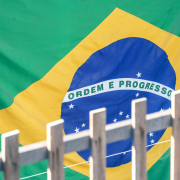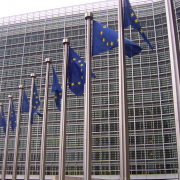Pesticide use on arable crops grown in Scotland has declined, according to a new report from the National Statistics Office.
Overall, pesticide applications to Scottish arable crops in 2018 were 4% lower than in the previous survey in 2016.
Within that overall figure, it is worth noting that 98% of arable crops were still treated with a pesticide in 2018. The treated area received on average 3.9 pesticide sprays over the year, with a total combined application weight of ca.1,312 tonnes.
Pesticide use on soft fruit crops was 10% higher in 2018 than reported in 2016. However, the low pesticide application rates reported in 2016 were ‘atypical’, said the National Statistician, and soft fruit pesticide applications in 2018 were lower than the levels reported in 2014 and 2012. The treated area of soft fruit received on average 11.2 pesticide sprays with a total combined weight of ca. 17 tonnes in 2018. The use of biopesticides and biological control agents has increased since the previous survey for managing insect pests and disease in soft fruit crops as part of an integrated pest management system.
In relation to pesticide use on stored potatoes, 28% of seed potatoes and 13% of ware potatoes were treated with a pesticide in 2018. These proportions are lower than reported in 2016 for seed potatoes and similar than 2016 for ware potatoes.
A reduction in the use of rodenticides used to control rodents on arable farms was also recorded. It was estimated that rodenticides were used on 55% of arable farms in 2018, a reduction from the 78% using rodenticides in 2016. Approximately 49 tonnes of rodenticide bait, containing less than 6kg of active substance, was estimated to have been used. This was 47% lower than in the previous survey in 2016. The rodenticides encountered were almost exclusively second generation anticoagulant compounds. It is likely that the decreased rodenticide usage, increased adoption of non-chemical control and increased uptake of best practice reported in 2018 has been influenced by the introduction of the 2015 industry led rodenticide stewardship scheme.
Fungicides were the most frequently used pesticides on arable crops, followed by herbicides/desiccants. This pattern has been observed in arable surveys for some time. In 2018, fungicides accounted for 46 per cent of the total pesticide treated area and 49 per cent of the total weight of active substances applied. When changes in crop area are taken into account, there was a four per cent decrease in area treated with fungicides from 2016 to 2018 and a five per cent decrease in area treated from 2014 to 2018. The weight of fungicides applied per hectare decreased by three per cent from 2016 to 2018 but increased by five per cent from 2014 to 2018.
In 2018, herbicides/desiccants accounted for 29 per cent of the total pesticide treated area and 34 per cent of the total weight of active substances applied. When changes in crop area are taken into account, there was a two per cent decrease in the area treated with herbicides/desiccants from 2016 to 2018 and a three per cent increase from 2014 to 2018. The weight of herbicides/desiccants applied fell by 15 percent from 2016 to 2018 and by 12 per cent from 2014 to 2018.
The hot dry weather conditions in the summer months may have reduced the need for use of desiccants. When corrected for area of crop grown, the glyphosate treated area decreased by 14 per cent and the weight applied decreased by 19 per cent from 2016 to 2018. In addition, the area treated with diquat decreased by 30 per cent and the weight applied decreased by 39 per cent from 2016 to 2018. The authorisation for diquat has been withdrawn with final use for the product in February 2020. The decreased use of diquat on potatoes may also have been influenced by growers trialling different methods of haulm destruction in preparation for the loss of diquat.
Insecticides accounted for four per cent of the total pesticide treated area and one per cent of the total weight of active substances applied. As in 2016, pyrethroids accounted for the largest area treated with an insecticide (87 per cent). When changes in crop area are taken into account, there was a three per cent increase in area treated with insecticide from 2016 to 2018 and a 25 per cent decrease from 2014 to 2018. The weight of insecticides applied per hectare of crop grown was found to have decreased by 30 per cent from 2016 to 2018 and by 68 per cent from 2014 to 2018. The large decreases in weight of insecticides applied since the previous surveys is influenced by the loss of the active substance chlorpyrifos which was applied at high rates for the control of leatherjackets and wheat bulb fly in cereals crops. When changes in crop area are taken into account, insecticide use on oilseed rape in 2018 decreased 30 per cent by area treated since 2016. Insecticide use on oilseed rape in 2016 increased by 10 per cent by area treated from 2014 as a result of the loss of neonicotinoid seed treatments which meant growers were reliant on foliar insecticides for insect control during autumn crop establishment period.
Molluscicides accounted for two per cent of the total pesticide treated area and one per cent of the total weight of active substances applied. When changes in crop area are taken into account, there was a ten per cent increase in area treated from 2016 to 2018 and a 50 per cent increase from 2014 to 2018. The quantity of mollusicides applied per hectare of crop grown increased by 12 per cent from 2016 to 2018 and by 77 per cent from 2014 to 2018.
Growth regulators accounted for ten per cent of the total pesticide treated area and 14 per cent of the total weight of active substances applied. When changes in crop area are taken into account, the area treated decreased by eight per cent from 2016 to 2018 and by seven per cent from 2014 to 2018. The weight of growth regulators applied per hectare of crop grown decreased by nine per cent from 2016 to 2018 and by one per cent from 2014 to 2018. The cold spring and resulting slow crop growth in 2018 may have reduced the requirement for the application of growth regulators.
Seed treatments accounted for nine per cent of the total pesticide treated area and one per cent of the total weight of active substances applied. When changes in crop area are taken into account, there was a six per cent decrease in area treated between 2016 and 2018 and an eight per cent decrease between 2014 and 2018. The weight of seed treatments applied per hectare has decreased by 36 per cent from 2016 and by 35 per cent since 2014. The decrease in the use of seed treatments, may relate to the withdrawal of some cereal seed treatment formulations in 2017, including prochloraz/triticonazole.
Sulphur accounted for less than 0.5 per cent of the total pesticide treated area and the total weight of active substances applied. When changes in crop area are taken into account, there was an 87 per cent decrease in area treated from 2016 to 2018 and an 88 per cent decrease from 2014 to 2018. The quantity of sulphur applied per hectare of crop grown decreased by 93 per cent from 2016 to 2018 and 88 per cent from 2014 to 2018.
Four active substances were recorded for the first time in the 2018 arable survey. These included the herbicide imazosulfuron (for control of broad-leaved weeds in cereal crops) and the fungicides oxathiapiprolin (for blight in potatoes) and benzovindiflupyr (for cereal diseases). There was also a fungicidal seed treatment, sedaxane, used in cereals, which was encountered for the first time in this survey.
Whilst overall use of pesticides in 2018 has reduced slightly from the previous survey, some individual active substances have exhibited considerable changes. For example, there were substantial increases in the use of the herbicide halauxifen-methyl (32,228 per cent by area treated) on winter and spring cereals since the previous survey. This was a relatively new active in 2016 and was only recorded once in the 2016 survey. Use increased in 2018 as one of the products containing this active substance was recommended as efficacious for weed control in cool conditions such as those encountered in the spring of 2018.
The main molluscicide active substance, metaldehyde, decreased by 20 per cent by area treated and 15 per cent by weight applied. This is likely to have been influenced by changes in authorisation for molluscicides. All products containing metaldehyde formed part of an enhanced stewardship plan from 2017 reducing its use. There has been an increase in ferric phosphate use (197 per cent by weight applied) in this survey as the only other chemical alternative for slug control. The herbicide, metobromuron has seen the highest increase in weight of active substance used (1,400 per cent) This active substance was included in two new products released at the beginning of 2015 for pre-emergence weed control in potatoes with some residual action and was encountered in the 2016 survey on a very small area.
The figures released were produced by independent statistical staff, free from any political interference, in accordance with professional standards set out in the Code of Practice for Official Statistics.
Source: Agropages


